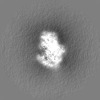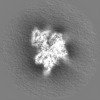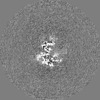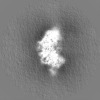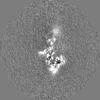[English] 日本語
 Yorodumi
Yorodumi- EMDB-39633: Cryo-EM structure of small and dead form SaCas9-RNA-DNA ternary c... -
+ Open data
Open data
- Basic information
Basic information
| Entry | 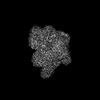 | |||||||||
|---|---|---|---|---|---|---|---|---|---|---|
| Title | Cryo-EM structure of small and dead form SaCas9-RNA-DNA ternary complex (sdCas9) | |||||||||
 Map data Map data | ||||||||||
 Sample Sample |
| |||||||||
 Keywords Keywords | CRISPR/Cas9 / Thermostable protein engineering / Domain minimized Cas / engineered SaCas9 / DNA BINDING PROTEIN | |||||||||
| Biological species |  | |||||||||
| Method | single particle reconstruction / cryo EM / Resolution: 2.97 Å | |||||||||
 Authors Authors | Kang ES / Kim NH / Thach TT / Hyun J / Kim YH | |||||||||
| Funding support |  Korea, Republic Of, 2 items Korea, Republic Of, 2 items
| |||||||||
 Citation Citation |  Journal: Adv Mater / Year: 2024 Journal: Adv Mater / Year: 2024Title: Structure-Guided Engineering of Thermodynamically Enhanced SaCas9 for Improved Gene Suppression. Authors: Eun Sung Kang / Nam Hyeong Kim / Hyun-Kyoung Lim / Hyeyeon Jeon / Kayoung Han / Young Hyun No / Kyungtae Kim / Zinah Hilal Khaleel / Dongsun Shin / Kilho Eom / Jiyoung Nam / Bok-Soo Lee / ...Authors: Eun Sung Kang / Nam Hyeong Kim / Hyun-Kyoung Lim / Hyeyeon Jeon / Kayoung Han / Young Hyun No / Kyungtae Kim / Zinah Hilal Khaleel / Dongsun Shin / Kilho Eom / Jiyoung Nam / Bok-Soo Lee / Han-Joo Kim / Minah Suh / Jaecheol Lee / Trung Thanh Thach / Jaekyung Hyun / Yong Ho Kim /  Abstract: Proteins with multiple domains play pivotal roles in various biological processes, necessitating a thorough understanding of their structural stability and functional interplay. Here, a structure- ...Proteins with multiple domains play pivotal roles in various biological processes, necessitating a thorough understanding of their structural stability and functional interplay. Here, a structure-guided protein engineering approach is proposed to develop thermostable Cas9 (CRISPR-associated protein 9) variant for CRISPR (Clustered Regularly Interspaced Short Palindromic Repeats) interference applications. By employing thermodynamic analysis, combining distance mapping and molecular dynamics simulations, deletable domains are identified to enhance stability while preserving the DNA recognition function of Cas9. The resulting engineered Cas9, termed small and dead form Cas9, exhibits improved thermostability and maintains target DNA recognition function. Cryo-electron microscopy analysis reveals structural integrity with reduced atomic density in the deleted domain. Fusion with functional elements enables intracellular delivery and nuclear localization, demonstrating efficient gene suppression in diverse cell types. Direct delivery in the mouse brain shows enhanced knockdown efficiency, highlighting the potential of structure-guided engineering to develop functional CRISPR systems tailored for specific applications. This study underscores the significance of integrating computational and experimental approaches for protein engineering, offering insights into designing tailored molecular tools for precise biological interventions. | |||||||||
| History |
|
- Structure visualization
Structure visualization
| Supplemental images |
|---|
- Downloads & links
Downloads & links
-EMDB archive
| Map data |  emd_39633.map.gz emd_39633.map.gz | 5.6 MB |  EMDB map data format EMDB map data format | |
|---|---|---|---|---|
| Header (meta data) |  emd-39633-v30.xml emd-39633-v30.xml emd-39633.xml emd-39633.xml | 23.9 KB 23.9 KB | Display Display |  EMDB header EMDB header |
| Images |  emd_39633.png emd_39633.png | 43.5 KB | ||
| Filedesc metadata |  emd-39633.cif.gz emd-39633.cif.gz | 7.8 KB | ||
| Others |  emd_39633_half_map_1.map.gz emd_39633_half_map_1.map.gz emd_39633_half_map_2.map.gz emd_39633_half_map_2.map.gz | 50.1 MB 50 MB | ||
| Archive directory |  http://ftp.pdbj.org/pub/emdb/structures/EMD-39633 http://ftp.pdbj.org/pub/emdb/structures/EMD-39633 ftp://ftp.pdbj.org/pub/emdb/structures/EMD-39633 ftp://ftp.pdbj.org/pub/emdb/structures/EMD-39633 | HTTPS FTP |
-Validation report
| Summary document |  emd_39633_validation.pdf.gz emd_39633_validation.pdf.gz | 750.9 KB | Display |  EMDB validaton report EMDB validaton report |
|---|---|---|---|---|
| Full document |  emd_39633_full_validation.pdf.gz emd_39633_full_validation.pdf.gz | 750.4 KB | Display | |
| Data in XML |  emd_39633_validation.xml.gz emd_39633_validation.xml.gz | 11.7 KB | Display | |
| Data in CIF |  emd_39633_validation.cif.gz emd_39633_validation.cif.gz | 13.6 KB | Display | |
| Arichive directory |  https://ftp.pdbj.org/pub/emdb/validation_reports/EMD-39633 https://ftp.pdbj.org/pub/emdb/validation_reports/EMD-39633 ftp://ftp.pdbj.org/pub/emdb/validation_reports/EMD-39633 ftp://ftp.pdbj.org/pub/emdb/validation_reports/EMD-39633 | HTTPS FTP |
-Related structure data
- Links
Links
| EMDB pages |  EMDB (EBI/PDBe) / EMDB (EBI/PDBe) /  EMDataResource EMDataResource |
|---|
- Map
Map
| File |  Download / File: emd_39633.map.gz / Format: CCP4 / Size: 64 MB / Type: IMAGE STORED AS FLOATING POINT NUMBER (4 BYTES) Download / File: emd_39633.map.gz / Format: CCP4 / Size: 64 MB / Type: IMAGE STORED AS FLOATING POINT NUMBER (4 BYTES) | ||||||||||||||||||||||||||||||||||||
|---|---|---|---|---|---|---|---|---|---|---|---|---|---|---|---|---|---|---|---|---|---|---|---|---|---|---|---|---|---|---|---|---|---|---|---|---|---|
| Projections & slices | Image control
Images are generated by Spider. | ||||||||||||||||||||||||||||||||||||
| Voxel size | X=Y=Z: 0.975 Å | ||||||||||||||||||||||||||||||||||||
| Density |
| ||||||||||||||||||||||||||||||||||||
| Symmetry | Space group: 1 | ||||||||||||||||||||||||||||||||||||
| Details | EMDB XML:
|
-Supplemental data
-Half map: #2
| File | emd_39633_half_map_1.map | ||||||||||||
|---|---|---|---|---|---|---|---|---|---|---|---|---|---|
| Projections & Slices |
| ||||||||||||
| Density Histograms |
-Half map: #1
| File | emd_39633_half_map_2.map | ||||||||||||
|---|---|---|---|---|---|---|---|---|---|---|---|---|---|
| Projections & Slices |
| ||||||||||||
| Density Histograms |
- Sample components
Sample components
-Entire : Cryo-EM structure of Compact SaCas9-RNA-DNA ternary complex
| Entire | Name: Cryo-EM structure of Compact SaCas9-RNA-DNA ternary complex |
|---|---|
| Components |
|
-Supramolecule #1: Cryo-EM structure of Compact SaCas9-RNA-DNA ternary complex
| Supramolecule | Name: Cryo-EM structure of Compact SaCas9-RNA-DNA ternary complex type: complex / ID: 1 / Parent: 0 / Macromolecule list: all |
|---|---|
| Source (natural) | Organism:  |
| Molecular weight | Theoretical: 106 KDa |
-Macromolecule #1: sCas9 (Compact SaCas9)
| Macromolecule | Name: sCas9 (Compact SaCas9) / type: protein_or_peptide / ID: 1 / Number of copies: 1 / Enantiomer: LEVO |
|---|---|
| Source (natural) | Organism:  |
| Molecular weight | Theoretical: 104.196102 KDa |
| Recombinant expression | Organism:  |
| Sequence | String: MKRNYILGLA IGITSVGYGI IDYETRDVID AGVRLFKEAN VENNEGRRSK RGARRLKRRR RHRIQRVKKL LFDYNLLTDH SELSGINPY EARVKGLSQK LSEEEFSAAL LHLAKRRGVH NVNEVEEDTG NELSTKEQIS RNSKALEEKY VAELQLERLK K DGEVRGSI ...String: MKRNYILGLA IGITSVGYGI IDYETRDVID AGVRLFKEAN VENNEGRRSK RGARRLKRRR RHRIQRVKKL LFDYNLLTDH SELSGINPY EARVKGLSQK LSEEEFSAAL LHLAKRRGVH NVNEVEEDTG NELSTKEQIS RNSKALEEKY VAELQLERLK K DGEVRGSI NRFKTSDYVK EAKQLLKVQK AYHQLDQSFI DTYIDLLETR RTYYEGPGEG SPFGWKDIKE WYEMLMGHCT YF PEELRSV KYAYNADLYN ALNDLNNLVI TRDENEKLEY YEKFQIIENV FKQKKKPTLK QIAKEILVNE EDIKGYRVTS TGK PEFTNL KVYHDIKDIT ARKEIIENAE LLDQIAKILT IYQSSEDIQE ELTNLNSELT QEEIEQISNL KGYTGTHNLS LKAI NLILD ELWHTNDNQI AIFNRLKLVP KKVDLSQQKE IPTTLVDDFI LSPVVKRSFI QSIKVINAII KKYGLPNDII IELAR GGSY ATRGLMNLLR SYFRVNNLDV KVKSINGGFT SFLRRKWKFK KERNKGYKHH AEDALIIANA DFIFKEWKKL DKAKKV MEN QMFEEKQAES MPEIETEQEY KEIFITPHQI KHIKDFKDYK YSHRVDKKPN RELINDTLYS TRKDDKGNTL IVNNLNG LY DKDNDKLKKL INKSPEKLLM YHHDPQTYQK LKLIMEQYGD EKNPLYKYYE ETGNYLTKYS KKDNGPVIKK IKYYGNKL N AHLDITDDYP NSRNKVVKLS LKPYRFDVYL DNGVYKFVTV KNLDVIKKEN YYEVNSKCYE EAKKLKKISN QAEFIASFY NNDLIKINGE LYRVIGVNND LLNRIEVNMI DITYREYLEN MNDKRPPRII KTIASKTQSI KKYSTDILGN LYEVKSKKHP QIIKKG |
-Macromolecule #2: sgRNA
| Macromolecule | Name: sgRNA / type: rna / ID: 2 / Number of copies: 1 |
|---|---|
| Source (natural) | Organism: synthetic construct (others) |
| Molecular weight | Theoretical: 31.483635 KDa |
| Sequence | String: GAUCUGAGUC CGGUAGCGCU AGUUUUAGUA CUCUGGAAAC AGAAUCUACU AAAACAAGGC AAAAUGCCGU GUUUAUCUCG UCAACUUGU UGGCGAGAU |
-Macromolecule #3: Target DNA
| Macromolecule | Name: Target DNA / type: dna / ID: 3 / Number of copies: 1 / Classification: DNA |
|---|---|
| Source (natural) | Organism: synthetic construct (others) |
| Molecular weight | Theoretical: 18.08358 KDa |
| Sequence | String: (DG)(DA)(DA)(DC)(DC)(DG)(DT)(DC)(DA)(DG) (DA)(DT)(DC)(DC)(DG)(DC)(DT)(DA)(DG)(DC) (DG)(DC)(DT)(DA)(DC)(DC)(DG)(DG)(DA) (DC)(DT)(DC)(DA)(DG)(DA)(DT)(DC)(DT)(DC) (DG) (DA)(DG)(DT)(DT)(DC)(DA) ...String: (DG)(DA)(DA)(DC)(DC)(DG)(DT)(DC)(DA)(DG) (DA)(DT)(DC)(DC)(DG)(DC)(DT)(DA)(DG)(DC) (DG)(DC)(DT)(DA)(DC)(DC)(DG)(DG)(DA) (DC)(DT)(DC)(DA)(DG)(DA)(DT)(DC)(DT)(DC) (DG) (DA)(DG)(DT)(DT)(DC)(DA)(DA)(DG) (DC)(DT)(DT)(DC)(DG)(DA)(DA)(DT)(DT)(DC) (DT) GENBANK: GENBANK: U19277.1 |
-Macromolecule #4: Non-target DNA
| Macromolecule | Name: Non-target DNA / type: dna / ID: 4 / Number of copies: 1 / Classification: DNA |
|---|---|
| Source (natural) | Organism: synthetic construct (others) |
| Molecular weight | Theoretical: 18.283701 KDa |
| Sequence | String: (DA)(DG)(DA)(DA)(DT)(DT)(DC)(DG)(DA)(DA) (DG)(DC)(DT)(DT)(DG)(DA)(DA)(DC)(DT)(DC) (DG)(DA)(DG)(DA)(DT)(DC)(DT)(DG)(DA) (DG)(DT)(DC)(DC)(DG)(DG)(DT)(DA)(DG)(DC) (DG) (DC)(DT)(DA)(DG)(DC)(DG) ...String: (DA)(DG)(DA)(DA)(DT)(DT)(DC)(DG)(DA)(DA) (DG)(DC)(DT)(DT)(DG)(DA)(DA)(DC)(DT)(DC) (DG)(DA)(DG)(DA)(DT)(DC)(DT)(DG)(DA) (DG)(DT)(DC)(DC)(DG)(DG)(DT)(DA)(DG)(DC) (DG) (DC)(DT)(DA)(DG)(DC)(DG)(DG)(DA) (DT)(DC)(DT)(DG)(DA)(DC)(DG)(DG)(DT)(DT) (DC) GENBANK: GENBANK: U19277.1 |
-Experimental details
-Structure determination
| Method | cryo EM |
|---|---|
 Processing Processing | single particle reconstruction |
| Aggregation state | particle |
- Sample preparation
Sample preparation
| Concentration | 0.6 mg/mL |
|---|---|
| Buffer | pH: 7.4 / Component - Concentration: 20.0 mM / Component - Formula: Tris-HCl / Component - Name: Tris, NaCl, MgCl buffer Details: 20 mM Tris-HCl, pH 7.4, 500 mM NaCl, 2 mM MgCl2, 1 mM TCEP |
| Grid | Model: Quantifoil R1.2/1.3 / Material: COPPER / Mesh: 300 / Support film - Material: CARBON / Support film - topology: HOLEY / Pretreatment - Type: GLOW DISCHARGE / Pretreatment - Time: 60 sec. / Details: -15 mA |
| Vitrification | Cryogen name: ETHANE / Chamber humidity: 95 % / Chamber temperature: 277 K / Instrument: FEI VITROBOT MARK IV |
| Details | Cas9: sgRNA: DNA ternary complex was generated by combining purified Cas9 protein, sgRNA, and dsDNA in molar ratios of 1:1.2:1.3, incubated at room temperature for 1 hour in 20 mM Tris-HCl, pH 7.4, 500 mM NaCl, 2 mM MgCl2, 1 mM TCEP. |
- Electron microscopy
Electron microscopy
| Microscope | FEI TITAN KRIOS |
|---|---|
| Specialist optics | Energy filter - Name: GIF Bioquantum |
| Image recording | Film or detector model: GATAN K3 BIOQUANTUM (6k x 4k) / Number real images: 50 / Average exposure time: 19.24 sec. / Average electron dose: 50.0 e/Å2 |
| Electron beam | Acceleration voltage: 300 kV / Electron source:  FIELD EMISSION GUN FIELD EMISSION GUN |
| Electron optics | C2 aperture diameter: 70.0 µm / Illumination mode: FLOOD BEAM / Imaging mode: BRIGHT FIELD / Cs: 0.1 mm / Nominal defocus max: 2.0 µm / Nominal defocus min: 0.7000000000000001 µm |
| Experimental equipment |  Model: Titan Krios / Image courtesy: FEI Company |
+ Image processing
Image processing
-Atomic model buiding 1
| Initial model | PDB ID: Chain - Chain ID: a / Chain - Residue range: 1-1053 / Chain - Source name: PDB / Chain - Initial model type: experimental model Details: The initial model generated from 5AXW without HNH and Linker domain |
|---|---|
| Refinement | Protocol: AB INITIO MODEL |
| Output model | 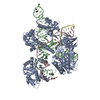 PDB-8ywh: |
 Movie
Movie Controller
Controller



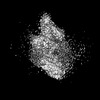
 Z (Sec.)
Z (Sec.) Y (Row.)
Y (Row.) X (Col.)
X (Col.)




















